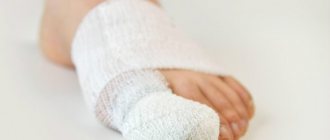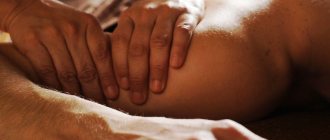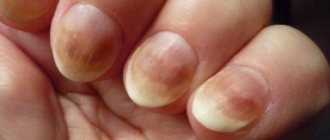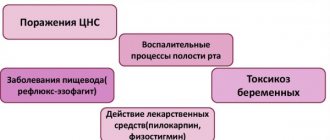Causes
It is believed that the occurrence and development of the disease is facilitated by:
- Flat feet;
- Genetic predisposition;
- Endocrine system disorders;
- Osteoporosis;
- Injuries;
- Gout;
- Pregnancy;
- Diabetes;
- Increased stress on the foot caused by excess weight, wearing tight high-heeled shoes, as well as work associated with static standing;
- The occurrence of the disease is provoked by weak ligaments, flexible joints and low muscle tone.
Disease prevention
To avoid the appearance of bunions, you need to start eating right and stop wearing narrow, uncomfortable shoes. Let your wardrobe include not only high-heeled shoes, but also moccasins, ballet flats, sneakers and flat boots.
Don't be lazy and do simple leg exercises in the evenings. To strengthen your foot muscles, wiggle each toe separately for a few minutes. Also scatter paper clips or matches on the floor and pick them up one at a time, then put a sheet of newspaper and first with your left and then with your right foot, crumple it into a tight ball. It's useful and fun at the same time.
Rub the cream into your feet in the evenings and give them a light massage. Stretch your fingers, paying special attention to the area where the pit may appear. This will help relieve fatigue from the foot and will be a good prevention of the disease.
Treatment methods
The choice of treatment method depends on the degree of development of the disease. When the first symptoms appear, conservative therapy is effective:
- The use of special pads: interdigital rollers, insoles, instep supports, finger correctors, orthopedic splints and night orthoses;
- Physiotherapeutic procedures: magnetic therapy, acupuncture, various therapeutic wraps, mud therapy, hirudotherapy;
- Massage and physical therapy help strengthen the muscles and ligaments of the foot.
To reduce pain, medications and traditional medicine are used: various compresses and lotions.
If the disease is in an advanced stage, surgical intervention is necessary, the decision about which can only be made by a doctor. Operations can be performed on soft tissues, bones, or combined. Surgeons use about 100 different types of surgical treatment for hallus valgus.
Bunion on the foot: causes and prevention of occurrence
Many of us mistakenly consider the appearance of a bunion on the big toe to be a purely aesthetic problem. Doctors call this disease hallux valgus and insist that this disease, like any other, requires treatment and prevention.
Where does a bunion come from?
Bunions appear more often in women. This disease is often inherited by them. If your mother has a bunion, there is a high chance that as you age, your foot will also begin to become deformed. However, if no one in your family suffered from such a problem, it does not mean that it will not bother you one day. A bunion occurs when the head of one bone protrudes over another. The more part of the bone protrudes, the more the thumb presses on the other fingers.
This can happen not only due to heredity. The cause is often flat feet, deforming arthrosis, chronic bursitis, disruption of the endocrine system and a number of chronic diseases. The idea that bunions are caused by wearing uncomfortable shoes is not a myth. Indeed, if you like high heels or wear narrow pumps, the likelihood of becoming the owner of a deformed thumb increases significantly.
Often, bunions appear in women who eat poorly and are overweight. The more kilograms you weigh, the more stress your feet experience, which means your bones and joints become more vulnerable. Sometimes men also develop bunions on their feet. Most often, the cause may be injury or some chronic disease. When the bone begins to protrude, the foot loses its attractive appearance. It takes on an irregular shape, making it very difficult to find shoes. Instead of elegant shoes, you have to wear sneakers or soft, worn-out slippers. But that is not all.
A bunion not only spoils the appearance of your foot, it also incorrectly distributes the load on your knees and spine. If this disease is not treated in time, lameness may appear and begin to bother the joints.
Symptoms of the disease
The sooner you realize that a bone has begun to grow on your foot, the greater the likelihood that the disease can be cured in the early stages and without surgery.
Often people who are just beginning to develop this disease feel severe pain and aching in their legs in the evenings. Particularly disturbing is the aching pain in the toes and midfoot. The first symptoms of the disease are also the appearance of corns, checkers and calluses on the thumb and little finger. Wearing your usual shoes may also begin to cause discomfort for you - your favorite shoes suddenly begin to press and rub.
Treatment of a bunion on the foot
If bunions begin to appear on the leg, they are first treated with conservative methods, and then they talk about surgery.
At the initial stages of the disease, doctors strongly recommend forgetting about uncomfortable shoes and starting to wear orthopedic ones. Patients are also prescribed physiotherapy, massage and various exercises to help strengthen the muscles of the feet.
If foot deformity begins, be sure to consult a podiatrist. He may prescribe you to wear special inter-toe silicone rollers or an elastic band that secures the foot and prevents it from deforming. All means are good in the fight against this disease, therefore, while it is still possible to cope with it without surgery, you can resort to the help of traditional medicine .
Disease prevention
To avoid the appearance of bunions, you need to start eating right and stop wearing narrow, uncomfortable shoes. Let your wardrobe include not only high-heeled shoes, but also moccasins, ballet flats, sneakers and flat boots.
Don't be lazy and do simple leg exercises in the evenings. To strengthen your foot muscles, wiggle each toe separately for a few minutes. Also scatter paper clips or matches on the floor and pick them up one at a time, then put a sheet of newspaper and first with your left and then with your right foot, crumple it into a tight ball. It's useful and fun at the same time.
Rub the cream into your feet in the evenings and give them a light massage. Stretch your fingers, paying special attention to the area where the pit may appear. This will help relieve fatigue from the foot and will be a good prevention of the disease.
Folk remedies
- 1River fish against bones
- 2Treatment with bone tar
- 3Iodine and ointment against bunions
One of the popular remedies is treatment with raw fish. Place raw fish in the refrigerator, cut a piece from it every evening and place it on the bone overnight. It is important that the piece contains not only pulp, but also bones. Treatment in this way lasts for three months: fish is added throughout the first week, and fir oil is rubbed into the second week. After three months of such treatment, the bone should become smaller or disappear altogether.
The disease can also be treated with bone tar. To do this, you need to bury a cast-iron pot in the ground, surrounding it with firewood. Place chopped chicken, beef or pork bones into it and light a fire. The bones should melt. The resulting viscous substance should be lubricated regularly.
The bone can be treated with iodine. To relieve pain, you can do a simple iodine grid at night. You can also mix iodine with several aspirin tablets and lemon juice and rub this solution into your leg in the evening.
There are dozens of recipes for all kinds of ointments that are prepared from herbs and other ingredients. For example, you can mix bodyaga, camphor, hot pepper, ethyl and ammonia and rub this hot mixture into the bone. Be careful - this solution can burn your skin. It is believed that this solution is quite effective, so to get rid of the stone, you should be patient.
It is recommended to choose a folk recipe for yourself - the composition of the ointment or tincture should in no case include components that cause allergies. If none of the methods help, surgery is prescribed. Most often, it is not considered difficult and the very next day doctors allow the patient to get up and return to work after 2 weeks. Take care of your feet, carry out preventive procedures and be healthy!
How to get rid of a bunion on your foot? Advice from Elena Malysheva
“Live Healthy” program about hallux valgus:
Prevention
To prevent a bunion on your leg, you must:
- Wear comfortable, preferably orthopedic, shoes;
- The heel height should be no more than 4 cm; with higher heels, shoes cannot be worn for more than two hours;
- Regular massage and health exercises for the foot;
- If necessary, weight loss.
Systematic self-observation and consulting a doctor at the first signs of the disease is a good prevention of the formation and development of bumps on the toes.
Symptoms of the disease
The sooner you realize that a bone has begun to grow on your foot, the greater the likelihood that the disease can be cured in the early stages and without surgery.
Often people who are just beginning to develop this disease feel severe pain and aching in their legs in the evenings. Particularly disturbing is the aching pain in the toes and midfoot. The first symptoms of the disease are also the appearance of corns, checkers and calluses on the thumb and little finger. Wearing your usual shoes may also begin to cause discomfort for you - your favorite shoes suddenly begin to press and rub.
Bunion on the big toe: degrees and symptoms of the disease
Hallux valgus (translated into Latin as hallux valgus) is a curvature of the metatarsophalangeal joint of the big toe.
When the disease occurs, the phalanges of the thumb deviate from each other, a lump grows on the finger, and inflammation begins. The growth may grow and become painful. Hallux valgus deformity has 4 degrees of development:
- The thumb angle is less than 20 degrees.
- Thumb offset angle ranges from 20 to 30 degrees.
- Thumb offset angle ranges from 30 to 50 degrees.
- The thumb angle is greater than 50 degrees.
How Simply Recommends
Why the medicine doesn’t work The key to successful treatment is, of course, following all the doctor’s recommendations and informing him of all significant changes during therapy. However, a specialist can talk as much as he wants about the regimen and duration of taking the drug, but most patients will still violate these rules. Read more
In the first degree, a person does not experience any painful sensations, there is only an aesthetic moment. The second causes discomfort when walking for a long time. With the third, the foot begins to deform significantly, and the bone bulges, its growth is noted. The skin near the big toe becomes red and swollen. At this stage, the joint loses mobility. The fourth degree of the disease is characterized by significant pain, the formation of calloused growths, and problems with choosing shoes arise.
Treatment with traditional methods
When treating a bunion near the big toe, traditional medicine is used as an additional therapy to relieve pain symptoms and a feeling of heaviness in the legs.
For these purposes, treated foot baths, ointments, compresses, lotions applied to the big toe bone, medicinal decoctions with analgesic and general strengthening effects are used.
Local baths to relieve joint pain
- Coniferous: boil 0.5 kg of fresh needles and young shoots, twigs of any coniferous tree (spruce, pine, cedar, fir and other species) for 1.5 hours in boiling water (3 liters). Strain the composition. Apply a foot bath so that the protruding bone is completely covered with pine decoction, the temperature of the decoction is 38°-39°C, the duration of the procedure is 15 minutes. Relieves pain, reduces swelling of soft tissues. Do it 3-4 times throughout the day (the decoction is used during the day, heating). It is advisable to do the last procedure at night, before putting on the night brace.
- With Epsom salts: dissolve 25-30 grams of magnesium sulfate in 3 liters of water. The temperature of the solution is 36°C, take a bath for no longer than 15 minutes. After the procedure, the leg is rinsed with clean water.
- For cinquefoil and comfrey: boil 100 grams of finely chopped plant roots in 3 liters of boiling water over low heat using a water bath for 40 minutes. Wait until the broth cools down, filter it, and use it for procedures.
- For oatmeal decoction: boil 400 grams of oatmeal in 3 liters of water for 20 minutes at a very low boil. Wait for the broth to cool down, make a local foot bath (with a temperature of 36–38°C) lasting no more than 20 minutes. Rinse the foot with clean water.
Compresses
Compresses relieve swelling of a deformed joint and reduce pain:
- With chestnut flowers: 2 tablespoons of flowers are brewed in a thermos for 20 minutes in a glass of boiling water. In the cooled, strained broth, moisten a gauze or cotton napkin and use it for a compress. Keep on the sore spot for one and a half to two hours. They also make a lotion from fresh chestnut candles, grinding the washed flowers in a blender (add a little water) until a paste forms. The flower mass is used as a lotion on the bone. Used in the treatment of tendinitis of the shoulder joint and other joints as a pain reliever.
- With leaves of fragrant callisia (golden mustache): for a compress, use leaves and shoots from vines that have at least 7 nodes. Leaves and shoots are washed in hot water, finely chopped and ground to release the juice. The resulting mass is applied to a gauze napkin and used as an application to the sore spot.
- Indoor geranium leaves: red geranium leaves are washed, crushed until the juice appears, and used in treatment when the bone on the big toe hurts.
Internal funds
- Medicinal tea: accelerates the treatment of advanced gout, improves metabolism.
| Ingredient | Grams | |
| 1. | White willow bark | 15,0 |
| 2. | Blue cornflower flowers | 4,5 |
| 3. | Burdock roots | 15,0 |
| 4. | Marigold flowers | 2,9 |
| 5. | Water | 800,0 |
How to prepare:
- Mix the ingredients.
- Place the herbal mixture in a thermos.
- Pour boiling water over the collection.
- Wait for the tea to brew for 1 hour.
Take 150 ml of tea during attacks of pain, sweetened with honey or sugar.
- To reduce pain in the bunion and relieve swelling of soft tissues:
| Ingredient | Grams | |
| 1. | Comfrey, root | 15,0 |
| 2. | Lingonberry herbal part | 3,3 |
| 3. | Celery root | 15,0 |
| 4. | Purslane herb | 5,0 |
| 5. | Rosehip fruits | 15,8 |
| 6. | Water | 400,0 |
How to prepare:
- The roots are finely chopped.
- Steam the tea using 2 tablespoons of mixed ingredients for 50-55 minutes.
- Waiting for the tea to cool down.
- Filtered.
Drink the entire portion in small sips throughout the day. Used to relieve pain in the treatment of synovitis of the knee joint.
- Infusion with sage: improves metabolic processes, reduces inflammation in the joint.
| Ingredient | Grams | |
| 1. | Sabelnik roots | 15,0 |
| 2. | Knotweed rhizome | 4,4 |
| 3. | Nettle leaves | 2,0 |
| 4. | Sage herb | 5,0 |
| 5. | Water | 800,0 |
How to prepare:
- All components are ground into powder using a coffee grinder.
- Pour the composition into a thermos.
- Brew by adding boiling water for an hour.
- Filter.
Drink 150-200 ml between meals instead of tea. The decoction is also drunk if your heel hurts when walking.
For the preparation of ointments, decoctions and lotions, the following plants are used: red elderberry, violet, elecampane, celandine, oak bark, alder bark, meadowsweet, Adam's apple fruit (maclura), peony tubers and other medicinal plants.
Conservative methods of treating bunions on the big toe
In the first stages of the disease, the doctor prescribes treatment using conservative methods. These methods include:
- Use of orthopedic devices.
- Physiotherapeutic methods.
- Massage.
- Baths.
- Exercises.
- Medications.
Among the wide variety of orthopedic devices for correcting displacement of the metatarsal joint, the following effective means can be distinguished:
- valgus corrector;
- tire;
- screed;
- interdigital roller;
- insoles and arch supports.
With the help of a valgus corrector, the sore thumb is fixed into an anatomically correct position. The device prevents further development of finger deformation and is usually used during sleep.
An orthopedic splint performs the same function as a valgus corrector. The convenience of using the tire is that it can be worn under shoes.
An orthopedic brace supports the transverse arch of the foot. It looks like an elastic band with an insert. This device is not recommended for regular wear.
An interdigital orthopedic roller, insoles, and special instep supports are used to evenly distribute the load on the forefoot.
The following physiotherapy methods are widely used by orthopedic doctors:
- Shock wave therapy.
- Laser therapy.
- Ultrasound therapy.
- Mud therapy.
With shock wave therapy, acoustic waves act on diseased bones and relieve inflammation. One session lasts about 15 minutes. After the first procedure, the patient feels significant pain relief. The duration of the course is determined by the orthopedist individually. Contraindications for this type of therapy are pregnancy, breastfeeding, infectious diseases, low blood clotting, the presence of a pacemaker in the patient’s body, and a cancerous tumor.
The use of a laser device is based on heating diseased joints. After the procedure, pain is significantly reduced, inflammation and swelling are reduced. A course of laser treatment prescribed by a doctor allows you to get rid of bone growths on the big toe in a fairly short time and prevents their reappearance.
Laser therapy has a number of contraindications:
- various tumors;
- pigmentation and moles on the affected area and on the skin around it;
- diabetes;
- diseases of the cardiovascular system;
- pulmonary diseases;
- increased levels of thyroid hormones.
Under the influence of ultrasound, the temperature of diseased areas of the body increases, as a result of which metabolic processes are accelerated and diseased joints are restored. This method of treatment cannot be used for disorders of the nervous system in the acute stage, thrombophlebitis, rapid pulse and problems of the cardiovascular system.
Therapeutic mud is designed to stop inflammation, improve blood flow and lymph movement. Treatment of hallux valgus with mud therapy requires courses. Then the painful sensations will disappear, and the bone will not protrude as much as before.
Massaging the bunions on the big toe is a very effective measure in treating their deformity. With its help, the ligaments of the foot are strengthened, blood supply is improved, inflammation is stopped, and pain is significantly reduced. Massage of the sore metatarsal bone should be done regularly.
Salt baths help with deformation of the metatarsal joint. To prepare the bath, add a tablespoon of sea salt to a liter of warm water. Your feet should be kept in this solution for about 20-25 minutes daily.
Regular exercise will also relieve the pain of a bunion. They consist of alternating steps on the toes, heels, inside and outside of the foot. Another effective exercise is to use your toes to try to collect scattered pencils or pens from the floor.
Periodic or constant occurrence of severe pain should be associated with taking anti-inflammatory drugs prescribed by a doctor. Anesthetic cream or ointment rubbed into inflamed areas has only a short-term effect, since they are not able to penetrate through the skin into the diseased joint.
Features of treatment
Some people believe that bunions are not a serious pathology. But in fact, the deformation of the thumb will gradually progress, which affects the condition of the entire musculoskeletal system. Its deviation from its axis occurs under the influence of provoking factors, for example, excess weight, wearing uncomfortable shoes or increased loads on the foot. Without eliminating them, the lump will gradually grow. A deviated thumb will move the other fingers, causing them to become deformed.
This condition leads to improper distribution of the load on the foot when walking. Because of this, pain will appear not only in the foot itself, but also in the knee joints and spine. Without treatment, this pathology often causes complications in the form of osteochondrosis, arthrosis of the joints, and curvature of the spine. And the pain that occurs in the area of the lump itself becomes excruciating and prevents the person from moving normally. Therefore, treatment of a bunion on the big toe must begin as early as possible.
It, of course, is carried out at home, since this pathology does not require hospitalization. But it is advisable that the therapy takes place under the guidance of a doctor.
We must remember: each person is individual, and only after examination and determination of the characteristics of the pathology can you choose those treatment methods that will be more effective.
In addition, therapy must be comprehensive. Its objectives are not only to relieve pain, inflammation and swelling. It is necessary to restore the correct position of the toes, return the foot to its functions and eliminate the causes of the deformity.












